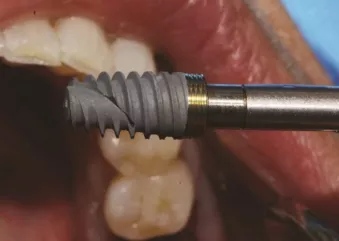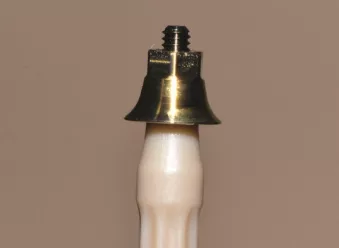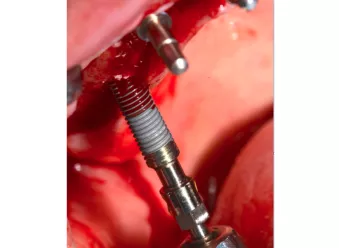
“Progress in implants with no change in protocol appeals a lot to my trainees”
Dr. Bobby Birdi has chosen to use Xeal™ abutments and TiUltra™ implants. Here, he explains why.

Owner of a prominent implant center, a Fellow of the Royal College of Dentists of Canada and a Diplomate of the American Boards of Periodontology and Prosthodontics, Dr. Bobby Birdi is one of the few board-certified dual specialists in both periodontics and prosthodontics across North America. He is also the co-founder of the Digital Dentistry Institute, one of the leading dental educational organizations in Canada.
Dr. Birdi was also one of the first Canadian dentists to adopt the Xeal™ and TiUltra™ surfaces. Here, he discusses how they have benefitted his practice, and why he is confident that they can help him achieve positive long-term treatment outcomes.
Dr. Birdi, could you please give us a brief summary of your professional activity?
I own a multi-specialty practice in Vancouver called BC Perio Dental Health & Implant Centre. It’s a leading implant center in Canada and provides all aspects of periodontal and prosthetic treatment including surgical planning, implant placement, digitally-guided navigational therapy, as well as the fabrication of prosthetic parts.
At our office, we’re really focused on offering immediate loading for single implant cases through to full-arch restorations. I would estimate that about 40% to 50% of the implants we place are immediately loaded.
Approximately how many cases have you used Xeal and TiUltra for since adopting them in your practice?
We place over 700 implants per year, and about 90% of those are Nobel Biocare implants for all types of cases, including full arch. As soon as we were able to integrate these surfaces—approximately July 2019—we quickly switched to using Xeal and TiUltra versions for all the products available with the new surfaces. The biggest portion of our implant stock is NobelParallel CC, and now we only order with the TiUltra surface.
In terms of Xeal and TiUltra, what was it that first excited you about these new surfaces?
When we look at implant surfaces throughout the world and how they’re created, it’s rare to get the opportunity to work with an implant surface that has different, gradually changing zones of roughness like TiUltra does. It’s about time that we have a surface designed to meet the needs of integration of tissue at every level.
Regarding Xeal, I was impressed that, through the Mucointegration™ process, it has been designed to promote soft tissue attachment with the abutment, which is important in terms of preventing bone loss and contamination.1,2,3,4
The golden hue was also something that I looked forward to witnessing a natural appearance for patients with a thin biotype, we’ve already seen improvements in their transmucosal appearance.
-

NobelActive TiUltra (Dr. Bobby Birdi)
-

On1 Base (Dr. Bobby Birdi)
-

NobelParallel TiUltra (Dr. Bobby Birdi)
What benefits have you witnessed from using these surfaces since they were first introduced to your practice?
One thing I’ve noticed is that we’ve had far fewer implant failures the past year. Personally, I had no implant failures in the second half of 2019, and the practice had fewer than five. We haven’t changed any protocol or how we’re loading implants, the one big change is converting to the new surfaces. So I think this could be a key factor in our improvement, and time will tell.
When using abutments with the Xeal surface, I’ve noticed that they seem to allow for thicker, better-quality surrounding soft tissue, particularly in my cases involving the All-on-4® treatment concept. In terms of TiUltra, it feels to me as though implants with this surface are able to really withstand challenging conditions, which has been quite surprising and is indicative of Nobel Biocare’s scientific expertise.
What has the feedback been like from your trainees on how to use Xeal and TiUltra? Have there been any commonly asked questions?
When we’re teaching these courses, most of the questions that we get center on why we’ve introduced these new surfaces in our practice and whether they’ll require new equipment and protocols. I like to highlight the importance of progression in implant surface treatment—how having a surface that changes in topography, chemistry and porosity like TiUltra is an advancement specifically designed to help tissue integration and get great treatment outcomes with the same protocols. Progress in implants with no change in protocol appeals a lot to my trainees.
What gives you confidence that implant cases conducted using the Xeal and TiUltra surfaces will function in the long term?
One of the main things that I hope helps us achieve long term success is their design for promoting tissue attachment in the transmucosal zone. The stronger that attachment is, the more impervious it is to contamination in the form of plaque, cement, or something else entirely.1,2,3,4
When it comes to TiUltra, the gradation of the implant surface in a way that imitates the changing density of bone5 is something that I’m very confident will help us maintain the existing bone in the long term.
References
1. Rompen E, Domken O, Degidi M, et al. The effect of material characteristics, of surface topography and of implant components and connections on soft tissue integration: a literature review. Clin Oral Implants Res 2006;17(Suppl 2):55-67.
Read on PubMed
2. Alva H, Prasad KD, Prasad AD. Bioseal: The physiological and biological barrier for osseointegrated supported prosthesis. J Dent Implant 2013;3:148-152.
Read online
3. Touati B, Rompen E, Van Dooren E. A new concept for optimizing soft tissue integration. Pract Proced Aesthet Dent 2005;17(10):711-715.
Read on PubMed
4. Schupbach P, Glauser R. The defense architecture of the human periimplant mucosa: a histological study. J Prosthet Dent 2007;97(6 Suppl):S15-25.
Read on PubMed
5. Milleret V, Lienemann PS, Gasser A, et al. Rational design and in vitro characterization of novel dental implant and abutment surfaces for balancing clinical and biological needs. Clin Implant Dent Relat Res 2019;21(Suppl 1):15-24.
Read online